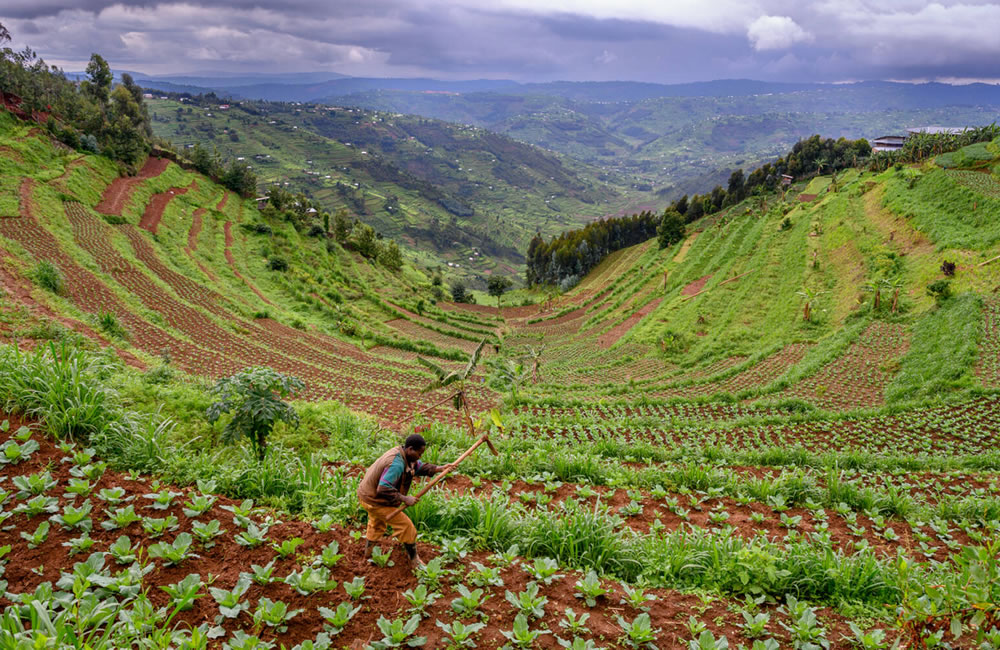Nyungwe Forest – A Primate world
One moment, the road winds unremarkably through the steep terraced slopes that characterize Africa’s most densely populated nation. Then, abruptly, the ever-present cultivation gives way to lush evergreen forest and branches draped in tangled lianas, canopy animated by liquid birdsong and a succession of liberating views across tree-swathed mountains rolling south to the Burundi border, this termed the country as the “land of a thousand hills”. Such is most people’s introduction to Nyungwe forest National park, which extending over almost 1000km2 is the largest extant rain forest in eastern or central Africa and possibly the most scenic, with few peers in terms of biodiversity.
It’s optimistic to arrive in Nyungwe National Park expecting to encounter a high proportion of the 75 mammal species which inhabit the shady forest interior Palm civet, Yellow-backed duiker, potto and Giant flying squirrel among them. But troops of up to 400 Ruwenzori colobus are easily located near the park headquarters, along with L’Hoest’s, Red-tailed, Dent’s and Silver monkeys, and further afield, and with greater effort of chimps.
Prominent among 275 bird species is the delightfully garish Great blue turaco, while 24 Albertine Rift endemics and the rare Congo bay owl will have serious birders salivating. A remarkable floral diversity includes 100 orchid species.
Accessible by public transport and serviced by a pleasant and inexpensive government rest house and campsite, Rwanda’s newest NP is tailor-made for budget-conscious nature lovers. More comfortable accommodation is available at Cyangugu port, about 30km west of the park boundary.
Parc des Volcans/Volcanoes National Park
Protecting Rwanda’s portion of the Virunga Mountains, the Parc des Volcans Rwanda was the site of Dian Fossey’s celebrated gorilla habituation and anti- poaching project, and will be familiar to some as the location of the film Gorillas in the Mist. And what a memorable location it is, this chain of free-standing volcanic mountains, whose daunting slopes swathed in giant bamboo clumps and montane forest, rise imperiously to above 4000m.
The star attractions are the world’s last 380 mountain gorillas, which are unique to the Virungas (DNA tests suggest the gorillas in Uganda’s Bwindi National Park are racially discrete). Four habituated troops, each dominated by a “gentle giant” silverback, frequently allow visitors on rwanda gorilla safaris to get close enough to stare into their deep brown eyes and the most emotive, haunting wildlife experience on the continent. The supporting cast includes elephant, which frequently leave steaming calling cards on the forest trails, but more likely to be seen are the localised Golden monkey and various forest birds and butterflies.
The Virungas straddle the border with Uganda and the Democratic Republic of Congo, a region marked by political instability in recent decades. The area is also prone to sporadic geological upheaval: one recent eruption expelled a wall of molten lava into the Congolese town of Goma. This shouldn’t put you off: the Parc des Volcans or commonly known as Volcanoes National park has been safe for some years now and the volcanoes that regularly blow their top aren’t ecologically compatible with gorillas.
The park has got one the best safari lodges for accommodation and a few basic hotels are found in the nearby town of Ruhengeri, or with a vehicle and with an early start you can track Rwanda gorillas as a day trip from the smarter hotels in Gisenyi or Kigali. Tracking is tougher during the rains (February-June, September-December). Unlike Bwindi Forest in Uganda, tracking permits are seldom fully booked in advance.
